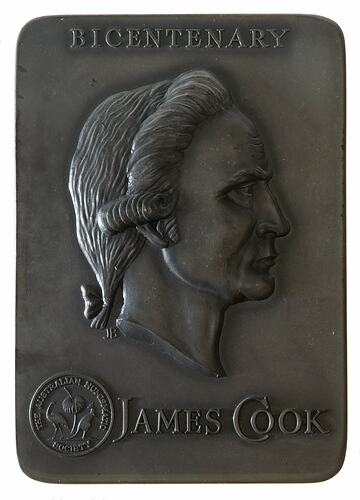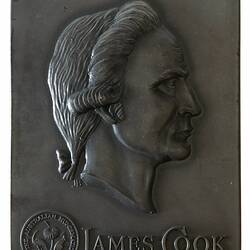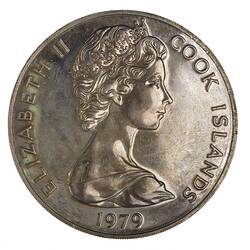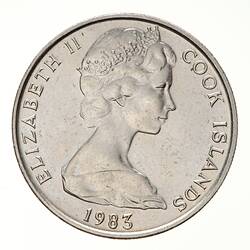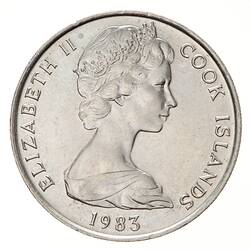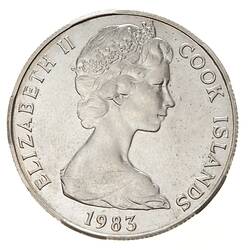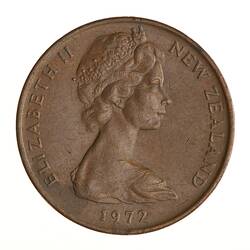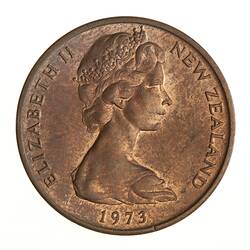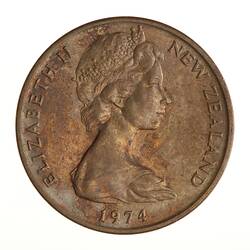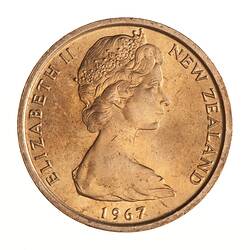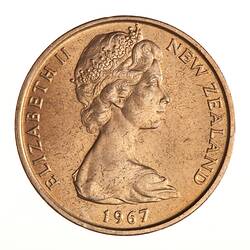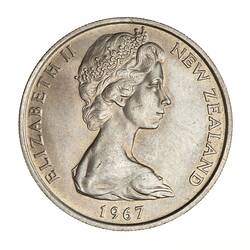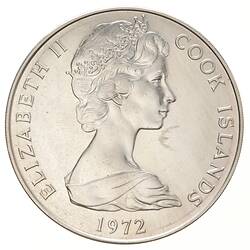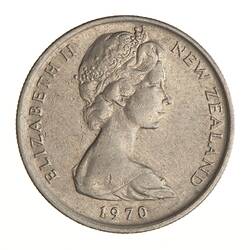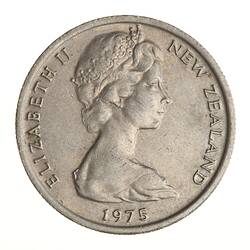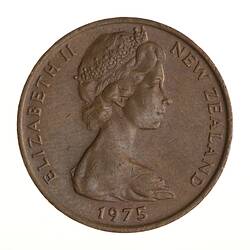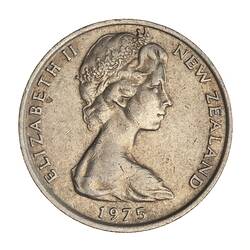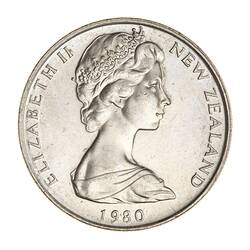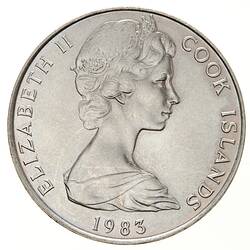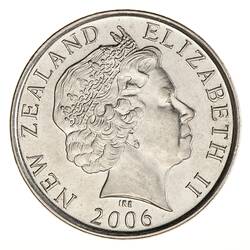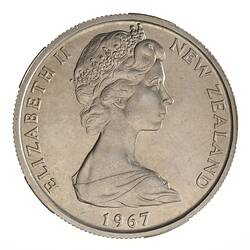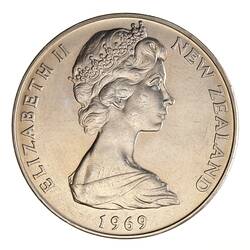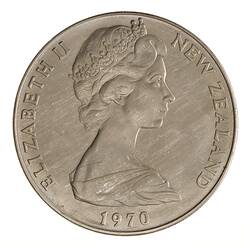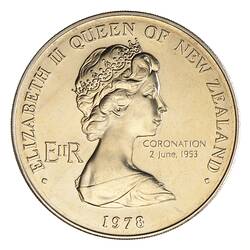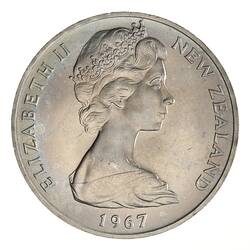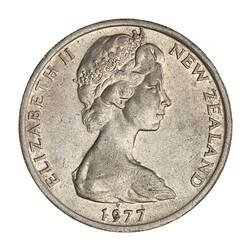Reginald George James Berry (known as James) was born on 20 June 1906 in London, England. Following the death of his father in 1911, James was sent to board at Russell Hill School at the age of seven, and remained at the school until he was 16, in 1922. He won prizes for art and his talent was fostered by an aunt, Lilian Berry, herself an artist. After leaving school he became an insurance clerk, but did not enjoy the work and decided instead to migrate to New Zealand. He arrived in 1925, and paid off his assisted passage as a farm cadet in Gisborne.
After two years in Gisborne, Berry began working as a commercial artist with the Goldberg Advertising Agency in Wellington. He Married Miriel Frances Hewitt, a secretary, in 1932. They were to have five daughters and one son. The same year he left the Goldberg Agency and took on freelance work, including the design of advertising layouts for the New Zealand Radio Record and New Zealand Dairy Exporter. From 1935 until 1942 he was staff artist at the Dominion, then for two years was drafted to Mayer and Kean, engravers, on war work. Thereafter he was self-employed, designing book covers, illustrations, bookplates and, increasingly, stamps, coins and medals.
Berry's delicate designs were largely created for competitions. His first successful design was a health stamp in 1933, which led to a regular commission for this series for 25 years. Further stamp designs were sought by New Zealand, Western Samoa, the Cook Islands, Niue, Tonga, and once by Bermuda. Although some thought his work mundane, in 1948 he was described in the American journal Weekly Philatelic Gossip as 'the greatest postage stamp designer in the world'.
His first medal design, a commemorative piece for the New Zealand Aero Club, appeared in 1935. In the same year he designed the reverse of the New Zealand Numismatic Society's Waitangi-Bledisloe Medal and the Waitangi Crown. The crown was part of a new series that replaced British coinage in New Zealand.
In 1964 New Zealand decided to change to decimal currency. Designs were invited, and Berry offered four sets featuring New Zealand flora and fauna. A nationwide newspaper poll showed overwhelming public support for Berry's designs, and one set was selected in 1966. It was subsequently approved by the Royal Mint and issued in 1967. Berry was sent to the Royal Mint to acquire further skills. His prestige in New Zealand was such that the Dominion Sunday Times declared him to be '1966 Man of the Year', and in 1968 he was appointed an OBE.
In the late 1960s and early 1970s James Cook's discoveries in the South Pacific were commemorated in stamps, coins, plaques and statues. Berry was called on to produce so many designs that he became an expert on the explorer. From 1971 there were frequent invitations to the Franklin Mint in Pennsylvania and in 1972 one to the Royal Australia Mint in Canberra. Berry also received commissions from Britain: for medallions of Oliver Cromwell and Winston Churchill, from the Cook Islands for additions to its decimal coinage, and from New Zealand for a series of commemorative dollars. He was granted the unusual honour of incorporating his version of the Queen's head on four of these dollar coins.
In his last years Berry travelled frequently. He mounted a retrospective exhibition in New Zealand House, London, in 1977; in 1978 he prepared an exhibition of his own landscapes in Dublin, and in 1979 designed his last medal, for the papal visit. On 6 November 1979, he boarded the plane for Wellington, and immediately suffered a fatal heart attack.
During his lifetime, Berry completed more than 1,000 designs for stamps, coins and medals.
References:
Dictionary of New Zealand Biography website. http://www.dnzb.govt.nz/dnzb/default.asp?Find_Quick.asp?PersonEssay=4B26.
More Information
-
Keywords
-
Localities
-
Authors
-
Article types
